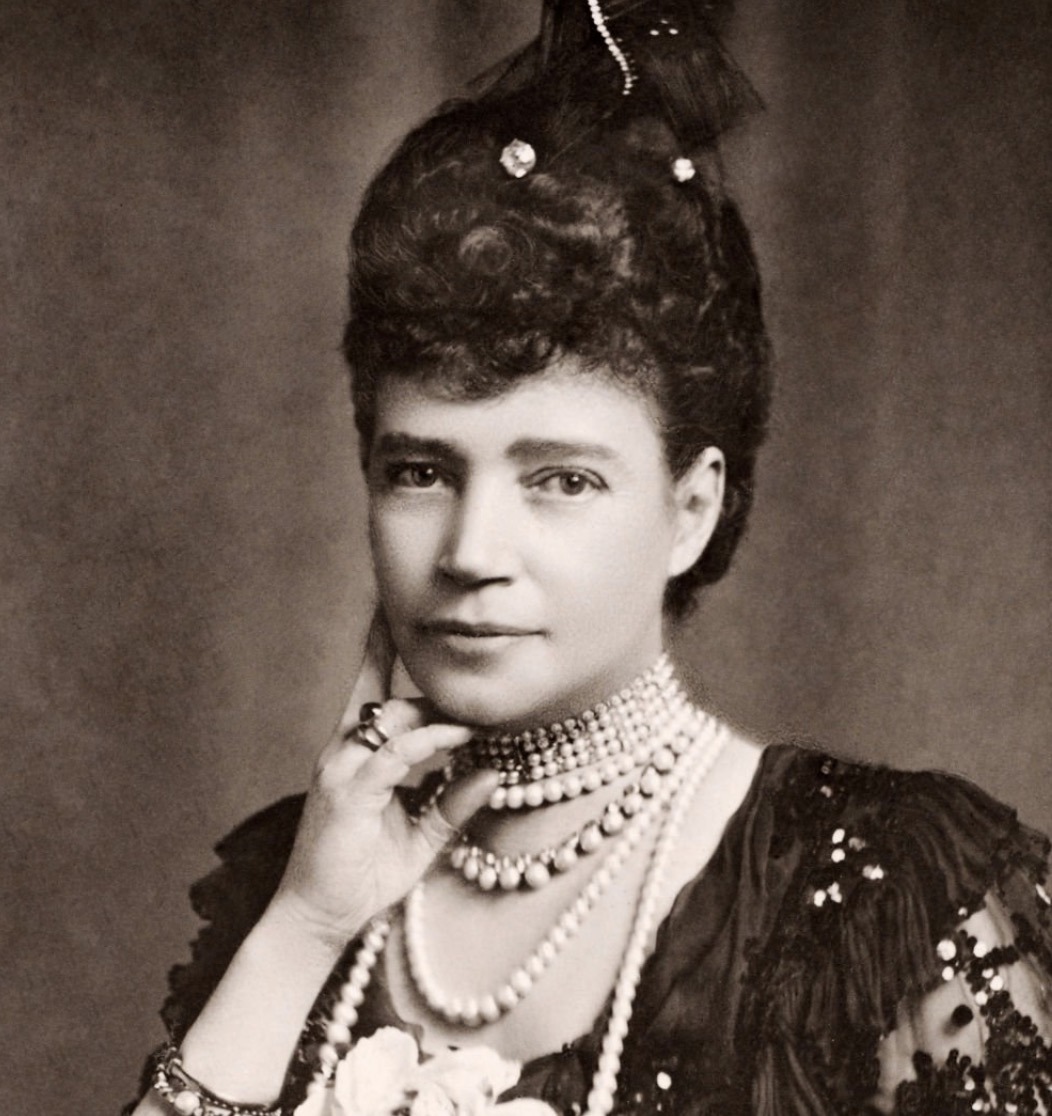Tomorrow marks the 135th Anniversary of the Birth of Grand Duchess Maria Pavlovna of Russia, who was bon on this day in 1890! The Russian Grand Duchess who married and divorced Swedish and Russian Princes, and opened an embroidery shop in exile, the Grand Duchess possessed a magnificent jewellery collection, that included this Cartier Sapphire Tiara!
Emerald Tiara | Cartier Sapphire Tiara | Fabergé Diamond Chain | Imperial Diamond Necklace
When Grand Duchess Maria Pavlova married Prince Wilhelm of Sweden, Duke of Södermanland in 1908, her father, Grand Duke Paul, commissioned this Sapphire and Diamond Tiara from Cartier.

The corresponding Sapphire and Diamond Stomacher and Necklace were ordered by other members of the Imperial Family, as Grand Duke Konstantin Konstantinovich noted:
Miechen, on behalf of the family, ordered a magnificent brooch in the form of a bow made of diamonds and sapphires. It is quite corresponding for the father’s gift – a tiara of diamonds and sapphires.”



Grand Duchess Maria Pavlovna most notably wore her grand Cartier Sapphire Tiara and Parure along with the Fabergé Diamond Chain for an Official Portrait in Swedish Court Dress taken soon after her marriage. She noted:
jewellery has always been part of the court attire and I perceived them only as an ordinary decoration and did not understand their material value.”

The couple divorced in 1914, and the Grand Duchess returned to Russia with her jewels, which included the Cartier Sapphire Tiara, Grand Duchess Elizabeth Feodorovna’s Emerald Tiara, and the Fabergé Diamond Chain. She remarried to Prince Sergei Putyatin in 1917, and it was her parents-in-law who managed to retrieve her Jewels from the Bank in Moscow before they were confiscated:
The old Putiatins had succeeded, before private property belonging to the imperial family was finally confiscated, in taking my diamonds from the bank in Moscow. My mother-in-law made a sort of jacket which she wore under her dress; into this she sewed the greater part of the fewels The tiaras, which it was impossible to flatten, she tucked in the crowns of her hats.
As we needed money at that time we were obliged to sell some of the things–a difficult procedure; first, because there were no buyers; second, because we feared to attract attention. So only the small pieces were sold. The rest of the jewels we decided to keep in the house. Although this was very risky, there was nothing else to do.

The problem now was to hide them. Already we had learned that during searches, attention was mainly directed upon chimneys, curtains, upholstered seats, pillows, and mattresses. Avoiding all such places, we found others, some of which, I must say, spoke well for our ingenuity. I had, for instance, a diadem in an old setting, consisting of diamond rays strung on a wire. I bought a large bottle of office ink and emptied it out; then, having unstrung the rays, I dropped them to the bottom of the bottle and poured paraffin over them. The last step was to pour back the ink. Since a large label surrounded the bottle, it was all but impossible to make out its contents. It stood for months on my desk in full sight of everybody.
Other things we fastened in home-made paperweights; still others in empty cocoa tins; dipped afterwards in wax and provided with a wick, they appeared to be ends of large church candles. We adorned the with spirals of gold paper and sometimes lighted them before the ikons to divert the attention of the servants.

The Grand Duchess managed to make a daring escape from Russia during the Revolution of 1917, with most of her jewels having been sent earlier to Sweden:
My jewels concealed in the bottle, the jewelled paper-weight, and the candles had been sent to Sweden, when the opportunity had presented itself some time previously. I now sold some small pieces to provide us with money for the trip, and besides this, I sewed into my stays and my hat two or three brooches.

Grand Duchess Maria Pavlovna opened a Russian embroidery shop, and in 1922, to fill an order for Chanel, she sold the Emerald Tiara to King Alexander of Yugoslavia, but the eventual fate of the Cartier Sapphire Tiara is unknown.
After The Russian Revolution, when money was urgently needed for survival, I had to change my mind and sell my jewellery collection. At that time, it was almost my only source of income.
Emerald Tiara | Cartier Sapphire Tiara | Fabergé Diamond Chain | Imperial Diamond Necklace






























